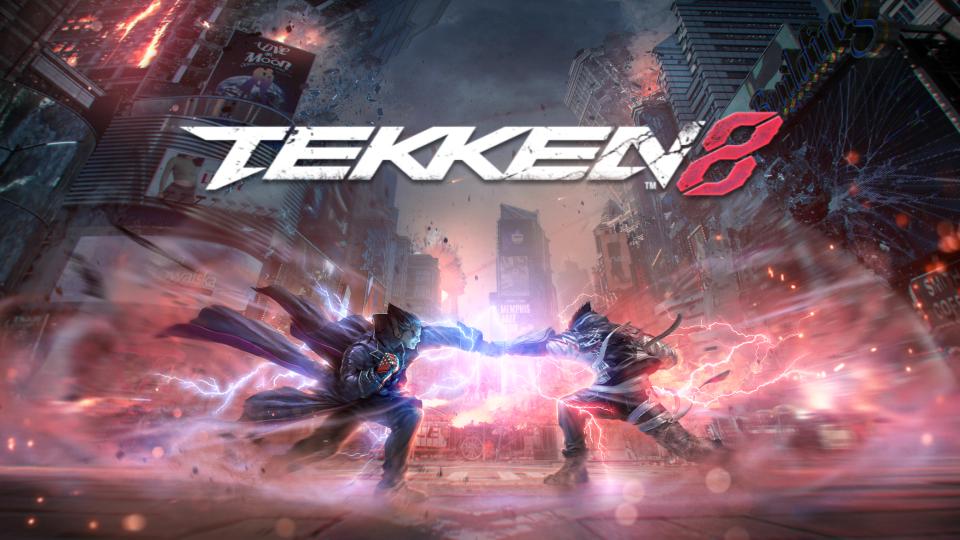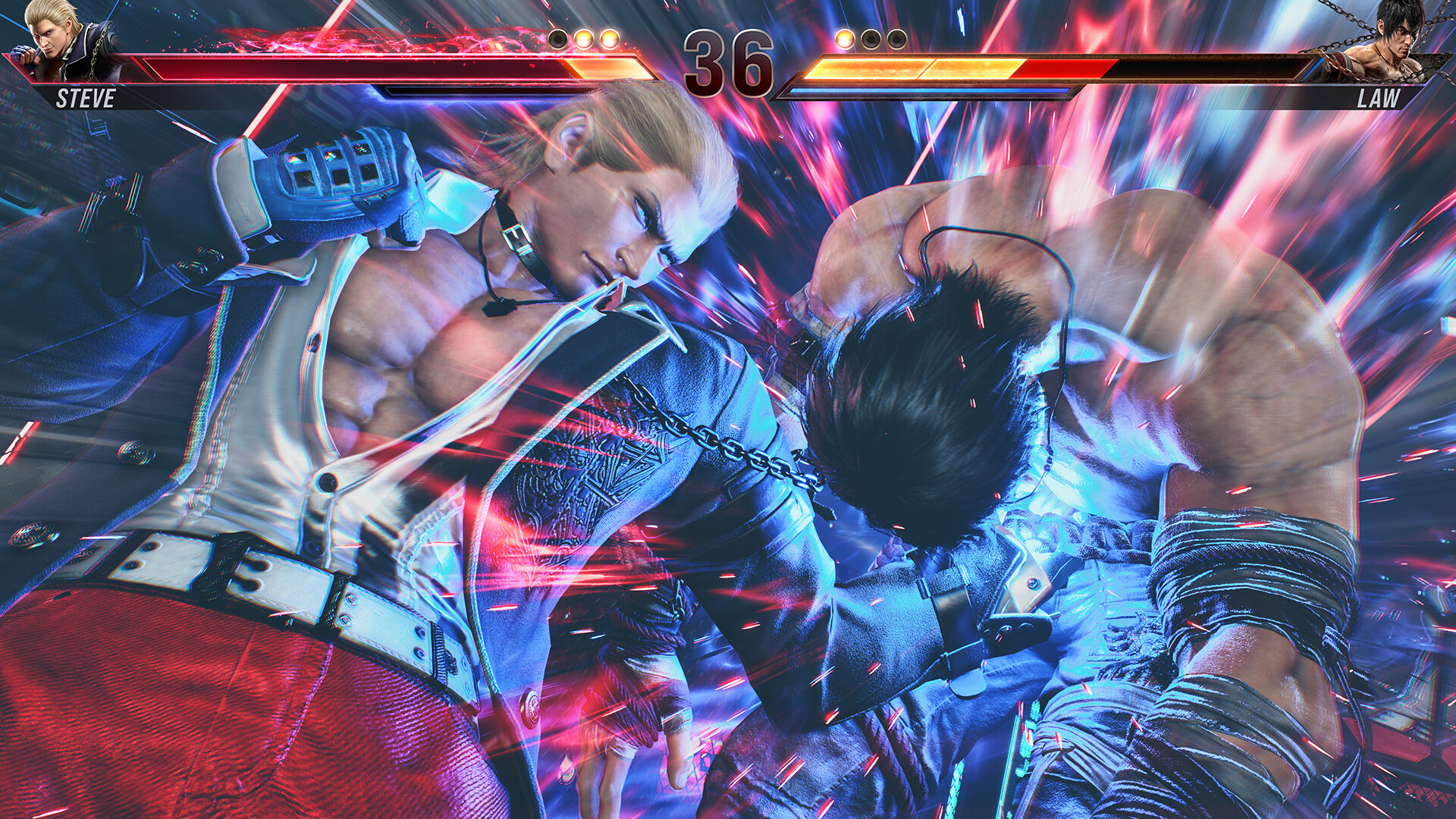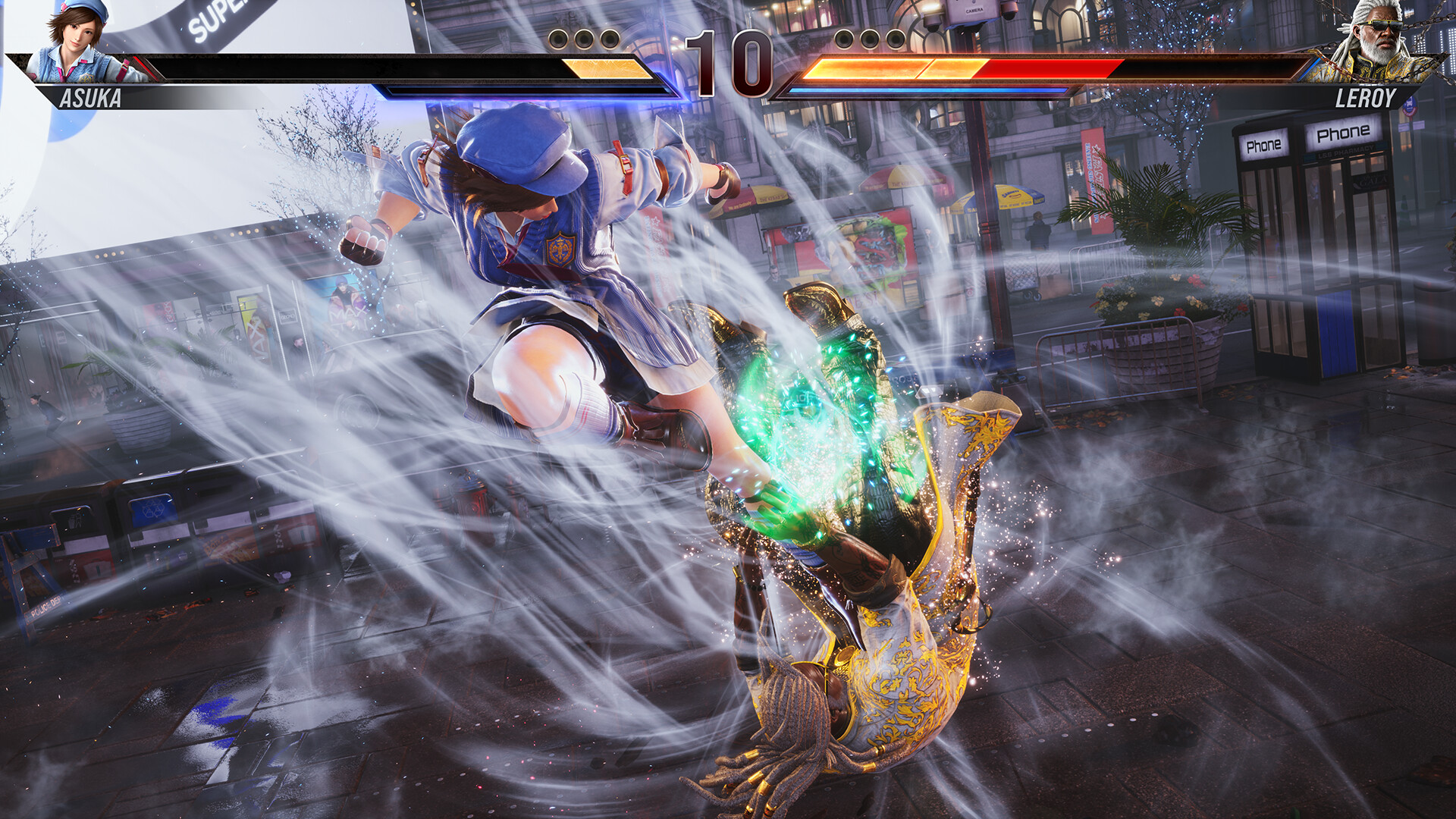
In all my years as a fighting game fan, there have been very few games that have generated as much anticipation and excitement as Tekken 8. I suppose this was to be expected seeing as the previous game in the series, Tekken 7, sold over 10 million units, making it the best selling Tekken game to date and one of the best selling fighting games of all time. I dabbled in Tekken 7, but compared to most other fighting games I’ve barely scratched the surface. Despite my relative inexperience with the series, I was still very interested in Tekken 8 so let’s give it the good old college try I never afforded its predecessor. ROUND 2. FIGHT!
The story picks up right where Tekken 7 left off. Kazuya Mishima, having killed his father Heihachi Mishima, stands virtually unopposed in his ambitions to destroy the world and rebuild it in his image. The fighters opposing Kazuya’s reign of terror have rallied around his son, Jin Kazama, who is the only person left with any hope of defeating him in battle. I found Tekken 8’s story much more enjoyable than Tekken 7’s story. Not exactly a high bar to clear, but I digress. Tekken 8 jumps right into the action and moves forward at a brisk pace all the way to the end without much fluff in the middle. I also appreciated how, unlike Tekken 7, every playable character gets a chance to shine in the story even if it’s only a minor role.
Don’t get the wrong idea though, regardless of how fun it is to play in comparison to Tekken 7, Tekken 8’s story is only okay at best. The biggest problem is that it relies on the player to have knowledge of the previous Tekken games in order to fully enjoy it. There is a set of story recap videos in the gallery for players who need to catch up, but it’s still less desirable than a standalone story. Additionally, the Tekken franchise has always been pretty over-the-top with scenes that otherwise would have been fairly serious are often undercut by how silly everything is when you stop and think about it. If you’re approaching Tekken 8’s story as a cinematic epic and not as a campy b-movie, you’re going to have a bad time. I have more thoughts on the story I would like to share, but most of them delve into spoiler territory so they will be saved for a post-review bonus section.
The story of Tekken 8 might go through rough patches, but the quality of the game’s presentation is far more consistent. Visually the game is a feast for the eyes with fluid character animations and dynamic stage interactions. Attack strings flow seamlessly between every punch and kick. The floor, walls, and background objects are destroyed in response to powerful strikes. Character clothing and hair whips around violently in response to rain, wind, and long combos. My only regret is that my potato of a PC can’t actually run the game in all its glory.
Tekken 8 has great audio to match its impressive visuals. The sound effects for attacks are positively brutal and really sell the idea that these fighters could smash through anything with their bare hands. The voice acting is interesting, as most of the cast speak languages related to their nationality. On one hand it begs the question of how these characters can communicate so effortlessly, but on the other hand it enhances the idea that Tekken is a globe spanning martial arts tournament. The music leans heavily into electronic and techno compositions, genres I typically don’t enjoy that much. Thankfully there are enough songs that incorporate real instruments to satisfy my inner musical elitist. Instrumentation aside, the songs support the action quite well, with driving beats and catchy melodies, so I can’t exactly fault it for not always catering to my tastes.

Rage Arts return and they’re even more cinematic than before. Hope you’re ready for some dramatic close ups.
As for the gameplay side of Tekken 8… well, it’s a Tekken game. What I mean by that is the core gameplay of the series doesn’t go through drastic changes between its various iterations, at least in comparison to other fighting game franchises like Street Fighter. If you played as Kazuya in the first Tekken game back in 1994, odds are you’ll be able to apply some of that experience to playing Kazuya in Tekken 8. Even if you’re a newcomer who’s only played a little Tekken 7, you’ll still have a head start on the basic controls and maybe a few basic combos.
What Tekken 8 does differently is its heavy emphasis on aggression. The most obvious addition is the Heat System, a temporary power-up the players can use once per round that strengthens their attacks, causes chip damage while blocked, and gives the player’s character access to additional special moves. Heat is a mechanic that just about anyone can understand the benefits of, but still requires a sense of when and how to use it effectively so I for one find it to be a welcome edition. Another major change is found in the Health Bar as some damage taken is converted into Grey Health, which is damage that can be recovered by landing attacks. This is a neat way to encourage players to go on the offensive and take risks, but I don’t think it will dramatically turn the tide of battle outside of a few rare cases.
Stages have also been overhauled with a few new gimmicks. Alongside the returning Wall Break and Floor Break, there is now Wall Blast and Floor Blast. These cause massive explosions that set the opponent up for an extended combo. While on paper this isn’t too dissimilar to Wall Break/Floor Break, which can also lead to longer combos, Blasts are much easier to capitalize on, so be extra careful when playing on stages that include these hazards. There are probably more changes to the gameplay that I’m too inexperienced to notice, but at the end of the day I’m still having a lot of fun with Tekken 8. Whatever’s going on under the hood, it must be doing something right.
In regards to the modes the gameplay is attached to, it’s a fairly decent selection. Genre cornerstones like arcade mode, versus mode, and practice mode are all here and they work just as well as ever. Alongside the story mode, which mostly consists of individual fights broken up by long cutscenes, there are also “character episodes” for every fighter in the game. These episodes take them through a series of tailormade battles against rival cast members in order to unlock special endings. Character episodes can be pretty repetitive, as most of them take place on the exact same stage, but despite the grind, collecting all the endings was still fun.

Asuka is the character I recommend for beginners. Her easy-to-use launchers set up nicely for air combos.
There is also Arcade Quest, a pseudo-tutorial mode where the player explores a series of virtual arcades while being drip fed tips on Tekken’s basic mechanics. The tips this mode gives are a little hit or miss; for example, using Heat Smash immediately after activating Heat is generally a wasteful use of the power up. But overall I’d still recommend the mode to beginners who need a little coaching. The return of the Tekken Ball minigame is also a welcome edition, where players juggle a beach ball back and forth across the screen dealing damage whenever it slams into the opponent. Fighting games don’t really do casual side modes like Tekken Ball very often so as a first timer the experience was a real treat.
By now it should be fairly obvious I enjoyed Tekken 8 quite a bit. The story might be silly and the tutorials could use a little tweaking, but with core gameplay this good, top notch graphics and music, and a variety of modes to experience, why wouldn’t I give a positive review? Hardcore fighting game fans will love it, and casuals will have enough tools to get in on the ground floor and share in the hype. The 8th King of Iron Fist Tournament is a showdown 30 years in the making and it delivers a knockout punch.
Scoring: 92%
Gameplay: 5/5
Visuals: 5/5
Sound: 5/5
Story: 3/5
Replayability: 5/5
Morality & Parental Warnings: Tekken 8 is a game of one-on-one martial arts competitions. Some characters integrate weapons, such as swords or guns, or supernatural powers into their fighting styles, but there are no instances of blood or gore. Some characters have sexualized outfits. There are some instances of strong language. A few characters have the ability to transform into demons or devils, but there are no associated rituals or incantations. The character Leo is left intentionally ambiguous in regards to his/her sex, but it comes off more as a gimmick than a statement on modern gender politics.
Bonus Section – Devils in the Details
While spoiler heavy story analysis usually doesn’t fit well in a review like this one, there are elements in Tekken 8 worth discussing from the Catholic perspective. First things first, we need some background on the story of Tekken leading up to this point. The story of Tekken begins with a young Kazuya Mishima being thrown off a cliff by his father, Heihachi Mishima, as a way of testing his strength as heir to the Mishima Zaibatsu. Kazuya managed to cheat death by making a deal with the devil in order to one day take revenge on his father.
Complicating matters even further was the birth of Kazuya’s son, Jin Kazama, who genetically inherited a portion of his father’s devil powers. From there Tekken has more or less continued to center itself around the Mishima family blood feud, and it’s not exactly a tale of heroism by any stretch of the imagination. Heihachi’s tyrannical machinations often result in cataclysmic disasters, Kazuya becomes increasingly consumed by the devil’s power and a thirst for total destruction, and Jin might have been the odd one out if he wasn’t responsible for starting World War 3 during the events of Tekken 6. Additionally, Tekken 7 further muddied the waters by retconning Kazuya’s devil powers to be a genetic inheritance from his mother as opposed to being a consequence of his own sinful choices.
From largely immoral protagonists to genetic devilry it should be obvious why a Catholic perspective would be a useful lens for a game like Tekken 8. I went into it with low expectations, but to my surprise I found that the game handles this stuff a lot better than anticipated. Starting with our protagonist, I was a little worried about Jin’s trajectory at the beginning of the story. It’s pretty clear that Jin regrets his decisions in Tekken 6 and seeks to defeat Kazuya as a form of atonement, but it looked as if his solution was to master the devil gene and fight fire with fire. This would have been both narratively predictable and morally unsatisfying, but thankfully they manage to avoid it at the very last minute.
Jin does indeed achieve mastery over the devil gene near the climax of the story, but it is ultimately not enough to defeat Kazuya. Instead Jin wins by transforming into an angel with a little help from his mother, Jun Kazama, and purifying the devil gene from himself and his father in the ensuing battle. Jesus famously asked the blaspheming scribes: “How can Satan drive out Satan?” (Mark 3:23) and the logical truth behind said question is profoundly applicable. You cannot drive away darkness with more darkness. You cannot be cleansed of sin by committing more sins. Only by entering the light of truth and repenting can we ever hope to conquer our demons. Jin defeating Kazuya as a devil would have been unsatisfying because it fundamentally contradicts this spiritual axiom. Jin conquering the devil gene by becoming an angel, on the other hand? I couldn’t ask for a better conclusion.
Moving onto our antagonist, the other problem from the previous games Tekken 8 needed to address was the retconning of Kazuya’s devil gene into a genetic inheritance. This change weakens Kazuya’s story because it calls into question how bad he actually is. Are Kazuya’s malicious tendencies the consequence of his flaws as a character? Or is he being possessed by his demonic powers? Fortunately for us, Tekken 8’s finale addresses this issue fairly conclusively.
The last chapter in the story is one final epic clash between Jin and Kazuya without their devil genes. Despite losing the supernatural powers that made Kazuya such an overwhelming threat to the world, he makes it quite clear that his goal of world domination remains unchanged. So in the end, Kazuya is bad to the bone even without the devil gene. Honestly that’s the way I prefer it. Not only does this fit better with the established narrative of the previous Tekken games, but it also more accurately reflects the nature of evil. Evil is not an inherent trait for beings possessing free will. Evil is always the result of a choice to knowingly act against what is good, true, and beautiful. While I still stand by my ruling that on the whole Tekken 8’s storytelling is very campy, the truths communicated through its final chapters cannot go understated. Who knows if the developers even intended the story to be read in this fashion, but the fact that it can is still commendable. Thank you for reading this unorthodox extension of the review, I hope it was as fun to read as it was to write.
